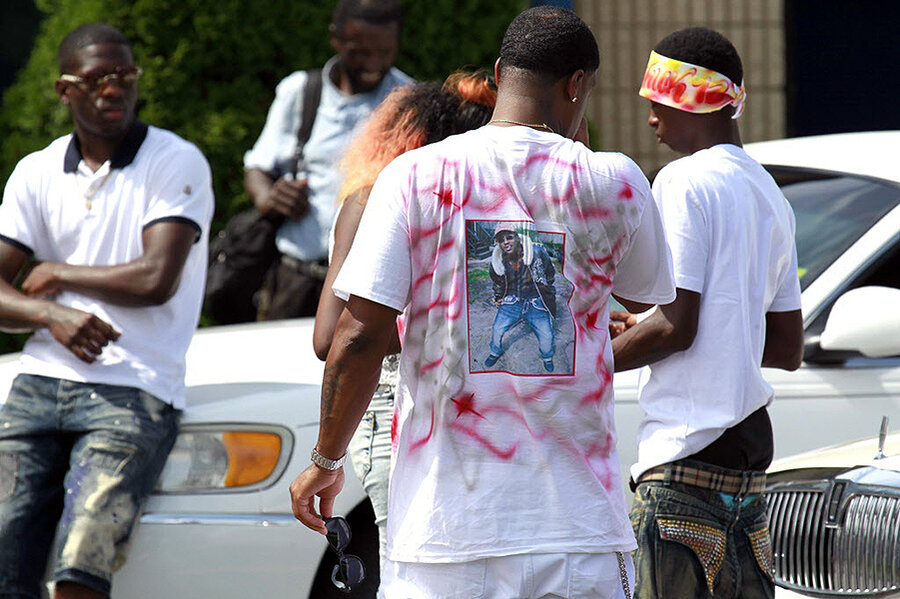Ex-officer charged in fatal shooting that launched Milwaukee protests
Loading...
The former Milwaukee police officer who fatally shot a young black man in August, resulting in two days of riots, has been charged with reckless homicide, according to court documents released Thursday.
Officer Dominique Heaggan-Brown, who is also a black man, shot Sylville Smith on Aug. 13 after a traffic stop turned into chase when Mr. Smith fled from the car. Although Mr. Heaggan-Brown was fired from the police force in October, soon after being charged with unrelated sexual assault charges, this is the first the public has known of his sentencing. If sentenced he will face a maximum penalty of 60 years in prison.
Mildred Haynes, Smith's mother, told the Milwaukee Journal Sentinel she was pleased Heaggan-Brown has been charged, but wished the charges had been more severe: “To me, he shot to kill," she said.
According to the criminal complaint, Heaggan-Brown and another officer chased Smith through a residential neighborhood. Heaggan-Brown fired the first shot when Smith turned toward him with a raised semi-automatic pistol. After being shot in the arm, Smith then threw his gun over a fence, before Heaggan-Brown fired a second shot, hitting Smith in the chest. The two shots were fired less then two seconds apart.
"Heaggan-Brown is observed standing a short distance from Smith with his weapon pointed down at Smith when Heaggan-Brown discharges a second shot from his weapon at what appears to be Smith's chest," the criminal complaint reads.
"A review of the body camera footage shows that at no time after the shooting did Heaggan-Brown or any other officer search Smith for a second firearm. In fact, when Smith demonstrably reaches for his waistband after being shot the second time, Heaggan-Brown does not discharge his weapon, but moves Smith's hand away with his own hand."
The shooting, which occurred in the predominantly black neighborhood in which Heaggan-Brown lived, resulted in two days of riots in which four officers were injured, six business and a police car were set on fire, and two teenagers were shot.
During the riots, however, police acted with restraint, and many protestors kept their focus on systemic racism, rather than criticizing Milwaukee's police force in particular, as The Christian Science Monitor reported at the time:
That focus on deeper issues matches a similar shift in the broader Black Lives Matter movement, which earlier this month released a platform of policy demands that goes far beyond protests against police brutality.
The mounting message is that police shootings, and the violent reactions they provoke, should not be reduced to a binary police-versus-blacks conflict, says Shawn Alexander, a professor of African and African-American studies at the University of Kansas.
Instead, these incidents should serve as a warning flare, pointing to how and where progress toward racial equality has stalled.
In the initial aftermath of the shooting, many protestors pushed for police to release the officers' body camera footage to the public. Many were frustrated the video was being used to detail what happened without being released.
"I don't think there's anyone in the country who's released a body-worn camera of an officer-involved shooting in 24 hours or 36 hours. I think Chicago set the modern record with a week," Police Chief Ed Flynn said during a press conference in August, according to Fox.
Now that there is an ongoing criminal investigation, however, the video footage will not be released.
Material from the Associated Press contributed to this report.






